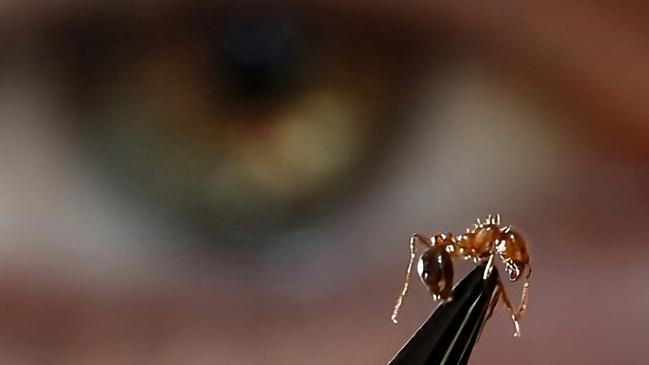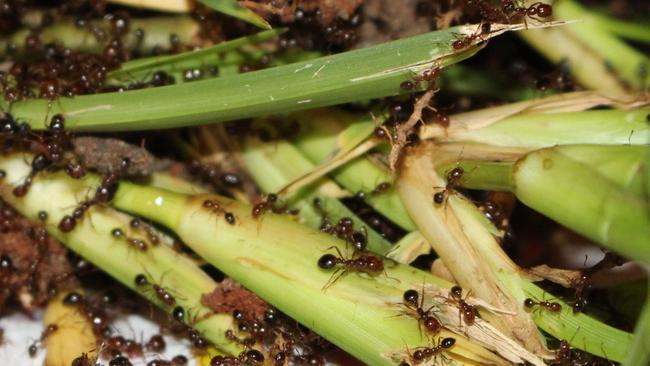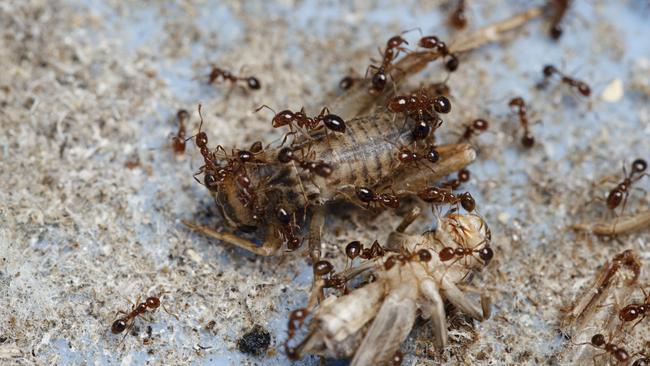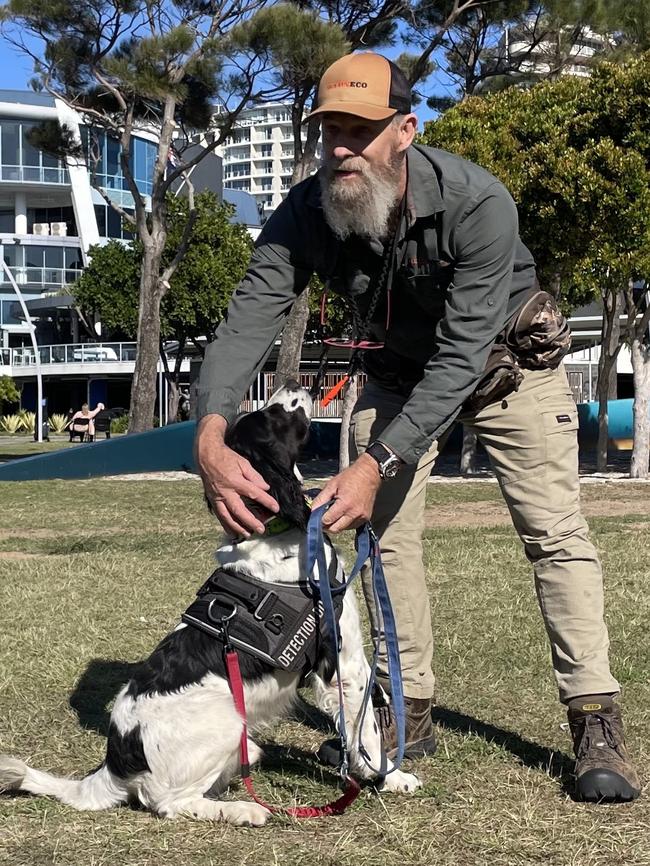Biosecurity measures ramped up to prevent invasive fire ants entering NSW from Queensland
Biosecurity measures including ant sniffing dogs and strict border surveillance are being used to prevent the spread of dangerous fire ants into NSW. See how the pests have spread.

Tweed Heads
Don't miss out on the headlines from Tweed Heads. Followed categories will be added to My News.
Ant sniffing detection dogs and traffic cameras are just part of a boost to NSW’s critical biosecurity measures as red imported fire ants march closer to the border.
The ants which are aggressive, spread quickly and pack a dangerous sting were first detected in Brisbane in 2001 and have recently been found in numerous spots across southeast Queensland – including just 5km from the Queensland-NSW border at Tallebudgera.
NSW Agriculture Minister Tara Moriarty visited Tweed Heads on Wednesday with Assistant Police Commissioner Stephen Hegarty and Tweed Shire Mayor Chris Cherry.
They were joined by National Fire Ant Eradication Program executive Ashley Bacon and representatives from the NSW Department of Primary Industries at Jack Evans Boat Harbour.
Ms Moriarty was overseeing ant surveillance activity and cross-border compliance efforts.
Fire ant biosecurity zones in southeast Queensland apply to people working with materials like soil, hay, mulch, manure, turf, potted plants and quarry stones and aggregate from infested areas.

Penalties apply, amid increased seasonal demand for livestock feed and landscaping supplies – and as there’s an increased risk of the ants spreading into northern NSW.
Vehicles crossing from Queensland must have high-risk materials certifications.
Ms Moriarty said it was important to educate the community to identify the ants.
She warned fire ants “are small” but “come together in clusters and swim through water”.
“We know how significant this (the ants in NSW) would be for industry and human health,” she said.

“We expect that more people will be transporting fodder across the border as seasonal conditions deteriorate in some areas of NSW, and that we’ll see increased demand for landscaping and building supplies as the weather warms up.”
Nevertheless, fire ant queens can fly up to five kilometres, assisted by the right conditions.

Ms Moriarty said the Eradication Program has $95 million in funding from NSW over four years, but more is needed.
“I’m encouraging my state counterparts to come forward with funding,” she said.
“ … we are throwing everything at our efforts to stop fire ants in their tracks because we know the potential impact they could have on our health, our lifestyle and our economy if they crossed the border into NSW.
“To further boost our compliance activities, we are conducting site inspections on both sides of the border and harnessing the capabilities of existing fixed camera systems at key road crossings between NSW and Queensland.

“This camera technology is normally used to conduct livestock movement surveillance, but will be critical in helping us spot high-risk materials being moved illegally across the border.”
Ms Moriarty said border crossing signage, liaison with local councils, social media awareness campaigns and letter box drops will be used to boost awareness.
DPI chief invasive species officer Scott Charlton said about 12,000 vehicles have been crossing the border daily.

“We’ll be going out to businesses and checking that they’ve got the correct certificates, that they are buying (materials) from areas from outside the zones. And checking paperwork, that they got it from somewhere safe,” he said.
The DPI has approached Tate Animals about training for dogs.
ReconEco dog trainer Craig Faulkner said: “It’s very early stages, we’re just organising … we have great protection dogs.”

“With a really highly trained dog like (springer spaniel) Jet and the other dogs it will take about six weeks for them to get a handle on the scent,” he said.
Assistant Commissioner Hegarty said police were helping enforce a control order, with penalties of up to $1.1 million for individuals and $2.2m for corporations.

“We are actively patrolling the main routes that lead from the infected area to NSW,” he said.
No fines have been issued so far.
Queensland Agriculture Minister Mark Furner MP said: “We know that if it wasn’t for the world’s most successful fire ant eradication program we would have fire ants spread as far as Bowen in the north, Longreach in the west and Canberra in the south.”

“NSW, all other states and the Commonwealth recently supported a new response plan … Working together is key to stamping out fire ants once and for all,” he said.
Mr Bacon said the “eradication of fire ants is still possible”, but will require “a whole-of-community approach”.
“By working together, we can protect the Australian way of life we know and love from fire ants.”





